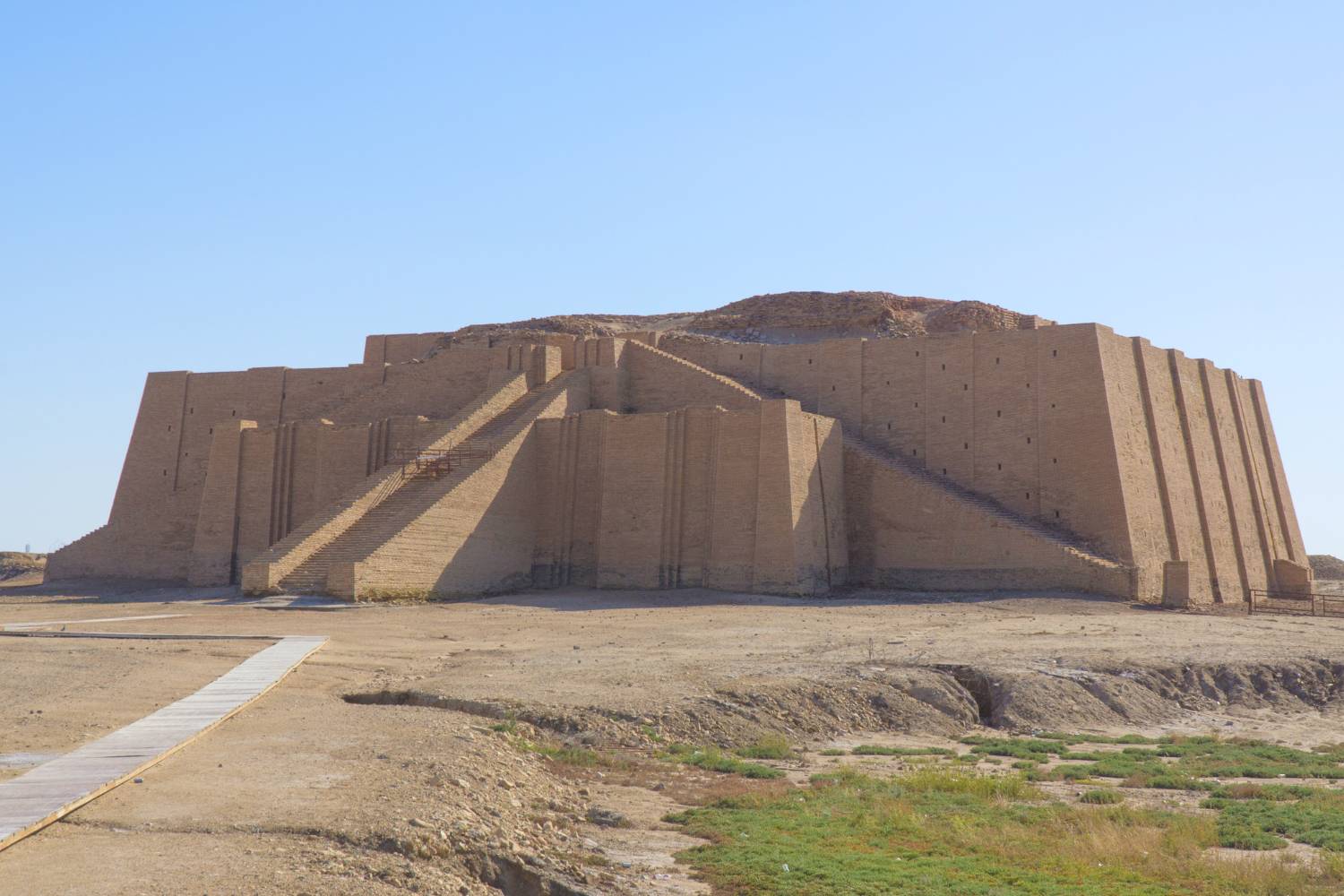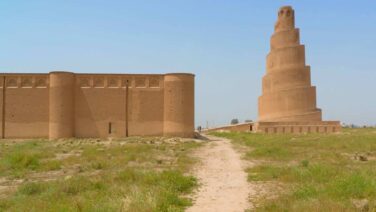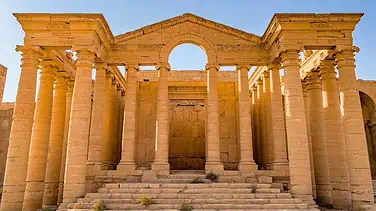Ur, one of the most significant cities in ancient Mesopotamia, is located in modern-day southern Iraq near the Euphrates River. Known for its impressive ziggurat and rich history, Ur was a major urban center and a powerful city-state during the early Bronze Age. As a key site in the Sumerian civilization, Ur provides invaluable insights into early urban development, religion, and culture.
Highlights
- Great Ziggurat of Ur: One of the most well-preserved ziggurats, dedicated to the moon god Nanna.
- Royal Tombs of Ur: Richly decorated tombs of Sumerian kings and queens, offering insights into ancient burial practices.
- Temple of Nanna: A central place of worship in Ur.
- Residential Quarters: Remnants of urban planning and everyday life in ancient Sumer.
- Artifacts: Numerous artifacts discovered in Ur reveal aspects of Sumerian life, art, and economy.
Historical Timeline
- circa 3800 BC: Ur is established as a small settlement.
- circa 2100 BC: Ur-Nammu, the first king of the Third Dynasty of Ur, begins construction of the Great Ziggurat.
- circa 2000 BC: The city reaches its peak under the Third Dynasty, known for significant architectural and cultural achievements.
- circa 1750 BC: Ur is captured and sacked by the Elamites, leading to its decline.
- circa 650 BC: The city sees a revival under Assyrian rule.
- circa 500 BC: Ur declines again and becomes largely abandoned by the time of the Achaemenid Empire.
- 1854 AD: British explorer J.E. Taylor conducts the first major excavations at Ur.
- 1922-1934 AD: Sir Leonard Woolley leads extensive archaeological excavations, uncovering the Royal Tombs.
- 21st Century AD: Ongoing archaeological efforts continue to uncover and preserve Ur’s ancient heritage.
Inhabitants and Rulers
Ur was predominantly inhabited by the Sumerians, one of the earliest known civilizations. Key figures associated with Ur include:
- Ur-Nammu: Founder of the Third Dynasty of Ur and the builder of the Great Ziggurat.
- Shulgi: Successor of Ur-Nammu, known for his administrative reforms and construction projects.
- Queen Puabi: A prominent figure whose richly furnished tomb was discovered in the Royal Cemetery of Ur.
- Hammurabi: The Babylonian king who later incorporated Ur into his empire.
Architectural and Cultural Sights
1. Great Ziggurat of Ur
Why Important: The Great Ziggurat is a massive stepped pyramid dedicated to the moon god Nanna. Its impressive size and state of preservation make it a key landmark in the study of ancient Mesopotamian architecture and religion.
2. Royal Tombs of Ur
Why Important: These tombs, including that of Queen Puabi, are renowned for their wealth of grave goods, including gold, jewelry, and musical instruments. They provide a vivid picture of the wealth and ceremonial practices of the Sumerian elite.
3. Temple of Nanna
Why Important: The Temple of Nanna was the primary place of worship in Ur, reflecting the city’s religious significance and the central role of the moon god in Sumerian cosmology.
4. Residential Quarters
Why Important: The residential areas of Ur reveal sophisticated urban planning, including multi-room houses, courtyards, and drainage systems. They offer valuable insights into the daily lives of the city’s inhabitants.
5. Artifacts
Why Important: Artifacts such as the Standard of Ur, a richly decorated wooden box, and the Royal Game of Ur, one of the oldest known board games, highlight the artistic and cultural achievements of the Sumerians.
Geographic Importance
Ur’s location near the Euphrates River provided significant advantages for trade, agriculture, and transportation. The river’s irrigation supported extensive agricultural production, while its position as a trade hub facilitated interactions with other Mesopotamian cities and distant regions. This strategic location contributed to Ur’s economic prosperity and cultural exchange.
Conclusion
Ur, with its profound historical and cultural significance, remains a cornerstone in the study of ancient Mesopotamian civilization. From the grandeur of the Great Ziggurat to the opulence of the Royal Tombs, Ur offers a fascinating glimpse into the achievements of one of humanity’s earliest urban centers. Exploring Ur provides a deeper understanding of the origins of urban life, religious practices, and architectural advancements. Whether you are a history enthusiast or a curious traveler, the ancient city of Ur offers a captivating journey into the past.
Keywords: Ancient city of Ur, Sumerian civilization, Great Ziggurat of Ur, Royal Tombs of Ur, Temple of Nanna, Mesopotamian history, Ur artifacts, Sumerian kings, Ur geography, early urban planning, Ur archaeological sites, Iraq historical sites, origins of urban civilization, Ur religious significance.


